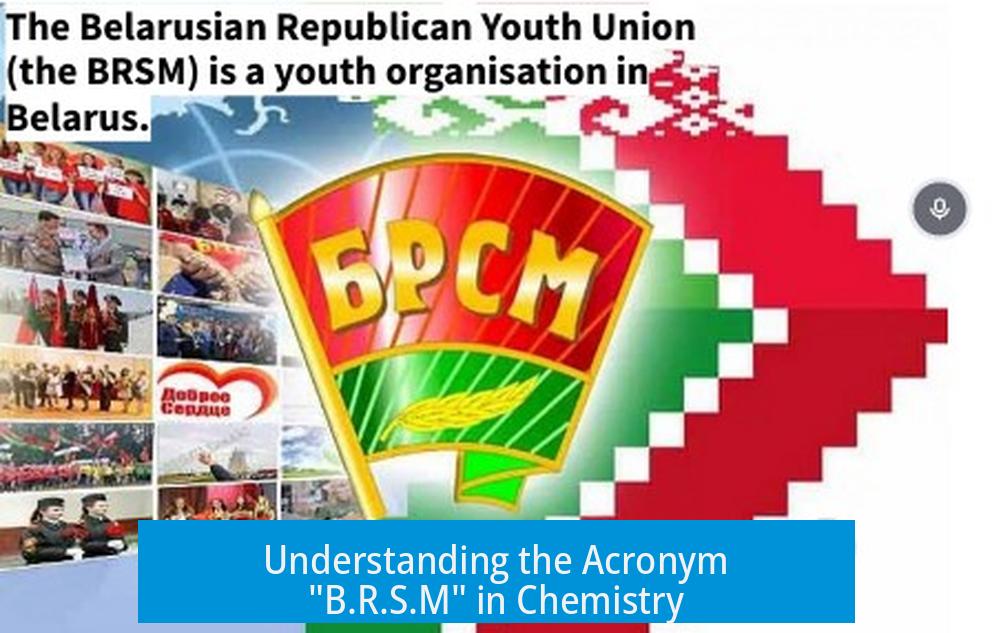Understanding the Acronym “B.R.S.M” in Chemistry

“B.R.S.M” stands for “Based on Recovered Starting Material.” It is a yield calculation metric used in synthetic chemistry. The term indicates that the percentage yield is calculated only on the starting material that was actually consumed or recovered during the reaction, rather than the total material initially charged.
What Does “Based on Recovered Starting Material” Mean?
During some chemical syntheses, not all starting materials react completely. Often, unreacted starting material can be isolated after the reaction and reused. The “brsm” yield considers only the portion of starting material that has undergone reaction, ignoring what remains unreacted.
- This approach can give a “higher” yield value compared to the conventional yield calculated from the total beginning material.
- It is especially useful when recovering unreacted starting material is easy and efficient.
- However, it assumes that the recovered starting material remains pure and fully reusable.
Why Is “BRSM” Controversial?
Some chemists question the validity of using brsm yield. For example, a principal investigator might consider it misleading because it can mask incomplete conversions of reactants.
Reporting yield strictly as product formed relative to the initial material shows the full picture of reaction efficiency. “BRSM” can give inflated impressions if the reaction does not proceed fully to completion without further optimization.
How Is BRSM Calculated?
The calculation typically involves:
- Determining the amount of starting material recovered after the reaction.
- Subtracting this from the initial loaded amount to find the quantity that reacted.
- Calculating yield by dividing the amount of product obtained by this reacted amount rather than by the total starting material.
Precise formulas vary, and papers often fail to detail the calculation fully, causing confusion among readers.
Common Confusions Surrounding BRSM
There is occasional confusion about the acronym itself. Sometimes the letter “r” is mistaken for “d,” or jokes arise about what it stands for. These indicate that “brsm” is not yet universally familiar or standardized in reporting.
Key Takeaways
- BRSM means “Based on Recovered Starting Material,” a yield metric adjusting for unreacted starting material.
- It provides a different perspective on reaction efficiency but may give an overly optimistic yield.
- The calculation method is not always clearly explained in literature, which can cause misunderstandings.
- Some chemists discourage using “brsm” to avoid masking incomplete reactions.
- Ensure clarity when encountering or reporting BRSM to avoid confusion with other acronyms.
What does the acronym “brsm” stand for in chemistry?
“brsm” means “based on recovered starting material.” It is a way to calculate yield by considering only the material that was not consumed in the reaction and has been recovered.
Why do some scientists find “brsm” misleading or problematic?
Some view “brsm” as misleading because it can hide incomplete reaction conversion. It may make the yield look higher than actual product formed. Reporting just product yield is seen as more accurate by some researchers.
How is the yield calculated when using “brsm”?
The yield is calculated by comparing product formed to the amount of starting material that was recovered, not to the total original amount. However, exact calculation methods are not always clearly explained in papers.
Is “brsm” a common and universally understood acronym?
No, “brsm” is not always well known. People sometimes confuse it with other acronyms or misread its letters. Its meaning and use can vary among researchers and labs.





Leave a Comment